#salix caprea
Text



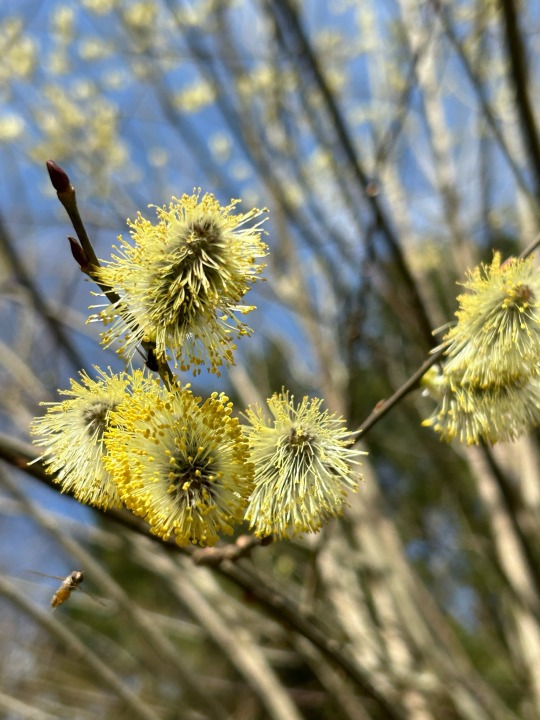
#BLOOMING PUSSY WILLOWS💛🤎
@samirafee
#source: samirafee#own pictures#photographers on tumblr#nature#plants#my garden#salix caprea#pussy willows#blooming#spring#march 2024
41 notes
·
View notes
Text
Goat willow (Salix caprea) photos I took today 24/03/2024, Wakefield, West Yorkshire, UK

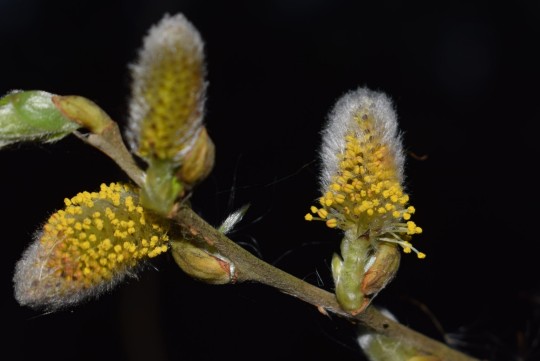

#nature#nature photography#british nature#wild#pussy willow#pussy willows#salix caprea#willows#willow trees#willow#salix#yellow flower#yellow flowers#yellow#wildflower photography#wildflower#wildflowers#wild flowers#plant#plants#plant photography#wild plant#wild plants#blooms#bloom#catkins#catkin#flowers#flower#flower photography
3 notes
·
View notes
Text

{{VENDU}}
Ֆǟʟɨӽ Ƈǟքʀɛǟ Ɨ
Ɦɛʀɮǟʀɨʊʍ : Saule Marsault (Salix Caprea)
ʟɨɛʊ ɖɛ Ƈʊɛɨʟʟɛȶȶɛ : mon jardin
#the crypt and the incubus#witch jewelry#electroformed jewelry#botanical jewelry#pendentif#salix caprea#saule marsault
1 note
·
View note
Text
Language of Flowers: French Willow
In the language of flowers, there is a specific flower for every day of the year. The flower for today, December 3, is French Willow, which signifies constancy.
Image above from Wikipedia.
Salix caprea is a classic harbinger of spring. Also commonly known as French Pussy Willow, the dainty branches covered in fuzzy catkins are sure signs that spring is around the corner. According to legend,…

View On WordPress
0 notes
Photo

#salix #caprea https://www.instagram.com/p/Cny1_7RsvKj/?igshid=NGJjMDIxMWI=
0 notes
Text

Yu-Ning Liang - Prostrate before Salix caprea's skirts, 2022
224 notes
·
View notes
Text
Moth of the Week
Hornet Moth
Sesia apiformis
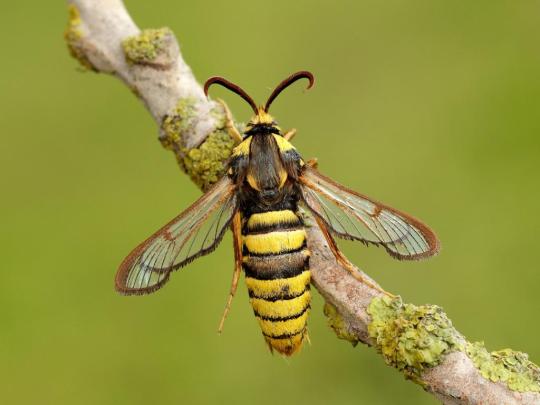
The hornet moth is a part of the family Sesiidae or the family of clearwing moths. They get their common name predictably from how they mimic the appearance of the hornet. This type of mimicry is called Batesian mimicry, which is when a harmless species mimics the appearance of a unpalatable or defended species to protect themselves from predators. It was first described in 1759 by Carl Alexander Clerck under the name Sphinx apiformis.
Description This moth uses what called Batesian mimicry to resemble the hornet so predators do not want to eat it for fear of being stung. The adult moths have clear wings with yellow and striped black bodies. The number of stripes varies, females have two stripes while males have three. They are about the size of a hornet with the same jerky flight pattern when disturbed. The only difference is the hornet moth has more yellow and lacks the waist between the abdomen and the thorax.
Wingspan Range: 34 - 50 mm (≈1.34 - 1.97 in)
Females are larger than males
Diet and Habitat The larvae eat several species of poplar trees such as apsen (Populus tremula), black poplar (Populus nigra), and goat willow (Salix caprea). They prefer trees surrounded by heavy vegetation as those kinds show more evidence of infestation from larvae burrowing into trees. Adults do not eat.
This moth ranges over mainland Europe, Great Britain, and parts of the Middle East. It had also been introduced to America and Canada. They prefer open habitats such as parks, hedgerows, golf courses, quarries, fens, pond edges, and pits.
Mating The female moths attract males using special posterior glands to emit pheromones, usually soon after emergence. The male doesn’t seem to have any courtship behaviors as the two sexes are likely to begin mating as soon as they come into contact. Both males and females mate multiple times with different partners before the female beings laying her eggs.
Females prefer to lay eggs on old or isolated trees surrounded by vegetation. Females can lay from hundreds to thousands of eggs and exhibits no parental care. When comparing the number of eggs laid to the number of adults emerging per year, it is clear the large number of eggs laid is to make up for the large mortality rate between the egg and adult stages.
Predators This species of moth is primarily preyed on by magpies and great tits. Interestingly, these birds do not eat hornets despite eating this moth. An explanation for this is since these birds don’t eat hornets, the mimicry is less effective as they have any bad experiences with insects of this coloration. In fact, it can be suggested that the black and yellow coloration has the opposite effect: once the birds realize this moth is harmless and can be easily seen, they begin to actively seek them out.
Fun Fact The hornet moth is seen as a pest in the eastern United Kingdom due to a large dieback of poplar trees from larvae burrowing into them. However this dieback is not inherently caused by the larvae but instead from drought and human influences, which the larvae increase the effect of.
(Source: Wikipedia, Butterfly Conservation)
#libraryofmoths#animals#bugs#facts#insects#moth#mothoftheweek#hornet moth#Sesia apiformis#Sesiidae#lepidoptera
223 notes
·
View notes
Text

13 notes
·
View notes
Note
I love the pictures you post. I've heard from some Russian immigrants in my area that the climate here, in these particular foothills in North America, is very similar to the part of Russia they are from. Its so wonderful to me to imagine a place so far away that is so similar to my home in some ways but different, with a different culture, different plants and animals. Fireweed (Epilobium angustifolium) is one of my favorite wildflowers. Its native range stretches across North America and Northern Europe and Asia. As far as I know, it is common in much of Russia, so you may be familiar with it. It brings me joy to imagine going across the world and still seeing this plant that I love, and to know that so many different peoples from so far away also know fireweed. Do you have any favorite wildflowers or plants?
Fireweed tea is very popular in Russia. I like Syringa vulgaris and Salix caprea\Salix cinerea because of their fluffy catkins.
48 notes
·
View notes
Text




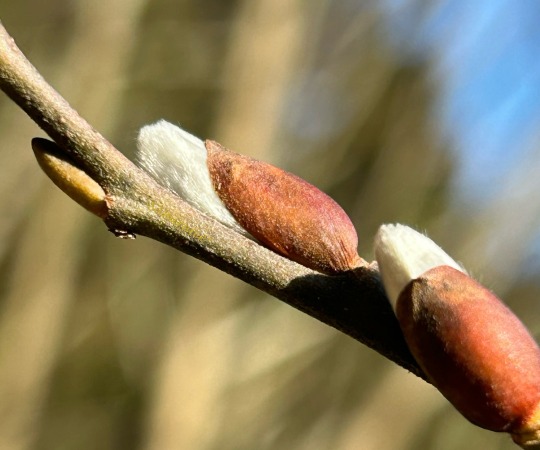



#PUSSY WILLOWS🤍🤎🤍
@samirafee
#source: samirafee#own pictures#photographers on tumblr#pussy willows#salix caprea#quote and pins by pinterest.com#vintage child by eloise wilkin#plants#my garden#january 2024
26 notes
·
View notes
Text
Herb of the Month - Willow
This post will have the medicinal profile and magical correspondences. This is done via years of research and having spent quite a bit of time with it, as it is one of my favorite trees. I've found her to be soothing and relaxing, a real comfort to be around. This may get updated over time to keep it as accurate as possible. Below the image, you will find the information. If you have any information you'd like to add or experiences you've had with it in the comments, please feel free to!
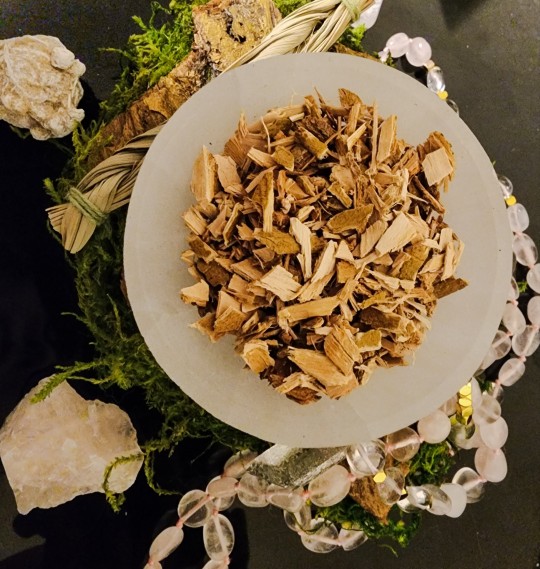
Plant name: salix alba
Planet: Moon
Element: Water
Gender: Feminine
Healing/medicinal properties:
• What willow is best known for is a chemical called salicylic acid, which is almost identical to aspirin. It is still a popular alternative for naturopaths to prescribe today. As you can imagine, it has pain-relieving properties.
• Reduces inflammation.
• Often prescribed for arthritis and joint pain by licensed professionals. Work with a naturopath to learn what dosage you need as well as how to best take it. Also used for menstrual cramps, if you want to speak with them about using it for that too.
• Known to reduce fevers.
• Helps gum & tonsil inflammation (use decoction).
• Black willow (salix nigra) was used as an aphrodisiac & sexual sedative. It would arose its user.
• Goat willow (salix caprea) was/is used for whooping cough and indigestion. Also used as an antiseptic and disinfectant.
• Sometimes used for weight loss.
Main magical properties:
• Healing: physically & emotionally.
• Love/romance.
• Fertility.
• To conjure spirits.
• Releasing energy.
• Develop psychic abilities and increase intuition.
• Dreamwork.
• Moon magic.
• Curses.
Spell uses:
• Place in a dream sachet to lucid dream or astral project. Often used for dream scrying. Add lavender or skullcap in it (or both) to aid you even further in this!
• Use in any kind of healing ritual. You can also make your own tinctures, salves, or teas to not only harness the physical benefits but bring deep healing. Charge on full moons, by a body of water if possible. If not, use the water element indoors!
• Use branches to make a powerful wand! Preferably fallen ones. Leave an offering and still ask permission to take it, out of respect.
• Carrying the leaves in a sachet attracts love.
• You can sprinkle it around the perimeters of the home and around the rooms to ward off/protect from evil.
• Traditionally, besoms were made from branches that were left on the ground. Use this to make your own! Again, ask permission and leave offerings.
• You can use this in fertility rituals. Placing it under the bed helps, or in a sachet under the pillows when trying to conceive.
• Some use the branches as divining rods. The rods may also be used for binding magic.
• Aids in ancient studies. It likes to teach its user by removing any blockages, especially emotional ones so they can retain more information, from a clearer headspace.
• Use for working through grief. I encourage making a charm for this, as it brings about a comforting energy during these difficult times.
• On another note, willow has a long history of being used in curses, especially revolving around death or causing someone grief.
• From author and herbalist Corrine Boyer: "Willow was thought in some parts to be protected by the devil and if one tied a knot in a young willow tree, and renounced their baptism while sitting under it, the devil would grant them supernatural powers. Polish folklore taught that the willow tree was the Devil's home and refrained from cutting it down for that reason."
Note: Some of these correspondences might not resonate with you, and that is okay. I've found many authors and researchers that I do not connect with their UPG on a certain herb, but I still make note of it (but put, off to the side, that it is their experience). You will experience the same things as you look into information on an herb you are seeking to understand. The best thing to do is work with the plant itself, develop a relationship, and you will find what resonates.
Another note: this is NOT a substitute for modern medicine. If you want to use it medically, see a licensed naturopath and have them work with your doctor(s) so they are all on the same page & can provide the best treatment possible. No herb is the cure for everything. Don't substitute for needed medications.
#witchcraft#witch#green witch#healing#herbs#herbalism#willow#witchblr#magical correspondences#green witchcraft#digital grimoire#don't forget to form your own opinions
63 notes
·
View notes
Text
Species of trees/bushes that aren't poisonous for rabbits

Photo credit: pixabay
Sometimes your bunbuns are bored and in need of something to chew on. Here's a list of trees and bushes that are considered safe for rabbits:
Alders
Birch trees (Only during summer)
Blueberry, raspberry & blackberry - bushes (branches, twigs, leaves, and even fruit are safe)
Common aspen (Populus tremula)
Common/European ash (Fraxinus excelsior)
Common/European beech (Fagus sylvatica)
Common juniper (Juniperus communis)
Cottonwood tree
Goat willow/Great sallow (Salix caprea)
Hawthorns
Hazel tree
Heather/Ling
Norway/European spruce (Do not give to pregnant rabbits)
Norway Maple (Acer platanoides)
Pine trees
Rose bushes (flowers are safe too)
Rowan tree (Do not feed the berries)
Willows/sallows/osiers
Fruit trees such as apple or pear trees, (avoid stone fruit trees such as cherry trees or plum trees etc)
Feel free to correct me if anything is incorrect. Feel free to reblog and add more trees/bushes to the list!
#bunnies#bunny#rabbit#rabbits#Rabbit facts#Health#Rabbit health#Animal facts#edible plants#Rabbit edibles#Facts#text post#resources
30 notes
·
View notes
Text

{{VENDU}}
Ֆǟʟɨӽ Ƈǟքʀɛǟ Ʋɨʀɨɖɨʊʍ
Ɦɛʀɮǟʀɨʊʍ : Saule Marsault (Salix Caprea)
ʟǟքɨɖǟʀɨʊʍ : Agate Arbre, Serpentine
ʟɨɛʊ ɖɛ Ƈʊɛɨʟʟɛȶȶɛ : mon jardin
#the crypt and the incubus#witch jewelry#electroformed jewelry#botanical jewelry#boucles d'oreilles#salix caprea#saule marsault#agate arbre#serpentine
1 note
·
View note
Text
@qwueerio submitted: Found these on a walk, they had infested multiple trees in the area, but only of one kind. (Probably prunus pradus or salix caprea) They had this formed this web around the trees and ate all of the leaves. From southern Finland in northern Europe. Any id? (Bonus dog in the background, baba)

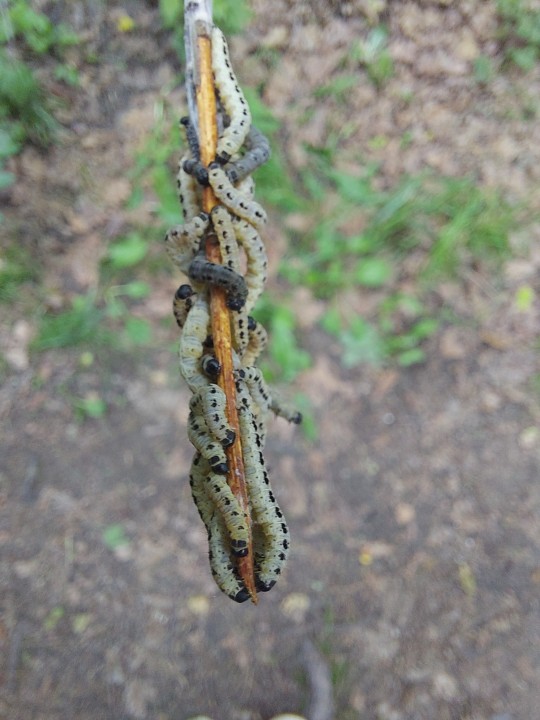
Bonus dog!!! Hope the dog knows I love them. And that the caterpillars do as well. They appear to be bird cherry ermine moth caterpillars, so that makes sense that they were on the bird cherry tree! As I said in a previous submission, they will often defoliate a whole tree, but the tree generally survives and produces leaves again the next year :)
76 notes
·
View notes
